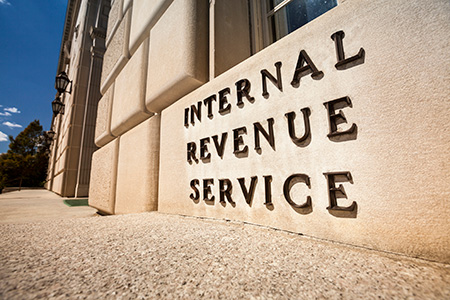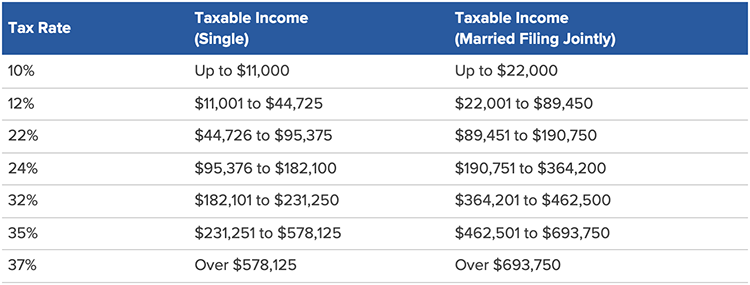If you’re a JJ Burns & Company client or a regular reader of this blog, you probably already know I’m a big fan of looking for silver linings when life gets challenging.
And though it’s been pretty hard to find something good to say about the rising cost of gas, groceries, and other necessities, we did get some positive inflation-related news from the Internal Revenue Service (IRS) in November.

In response to the higher-than-normal inflation the U.S. experienced in 2022, the IRS is making significant changes to the federal income tax brackets for 2023, which means taxpayers can expect to see big savings when they calculate next year’s taxes,
That’s a pretty good-sized break in the clouds all on its own. But for some savers, that silver lining can stretch way beyond simply lowering next year’s tax bill. It’s also an opportunity to build a four-year plan to convert money from a traditional IRA to a Roth IRA while tax rates are substantially more affordable—drastically minimizing the painful tax bite a Roth conversion can take.
Here’s Why Converting to a Roth Now May Make Sense
If you’ve been considering a Roth conversion, your financial advisor already may have spoken to you about taking advantage of the historically low tax rates put in place by the Tax Cuts and Jobs Act (TCJA) starting in 2018. Many advisors have been urging clients to convert their money before the TCJA rates sunset at the end of 2025.
2023’s inflation-adjusted brackets offer further incentive to get the job done. And if you start moving money now, in 2022, and finish in 2025 (before the TCJA sunsets) you’ll have four years to complete your Roth conversion with what we know will be lower tax rates. (Though we can’t be sure the rates won’t be higher in 2024 and 2025 than they will be in 2023.)
To take full advantage of those lower tax rates, however, it’s imperative that you get the ball rolling this month. A Roth conversion is reportable and taxable in the year in which the funds leave your traditional IRA—so if the distribution occurs by December 31, 2022, it will go on your 2022 tax return, even if the funds don’t go into the Roth account until early 2023.
To be clear, the inflation-adjusted tax brackets won’t apply to your 2022 return. But there is a second silver lining that could motivate you to start converting this year: If your traditional IRA’s value dropped in 2022 due to a market downturn, the 2022 tax bill for converting to a Roth will be lower. And when your stocks rebound, the money in your Roth account will grow tax-free.
Another plus: Even if you’re in your mid- to late-60s now, you could complete a four-year conversion plan before turning 72, which means you won’t have to worry about calculating and paying RMDs on those funds down the road.
Why Did the IRS Expand the Tax Brackets?
The IRS actually tweaks the tax code every year to help mitigate cost-of-living increases. But the 2023 adjustments are much larger than usual. The taxable income values for each of the seven tax brackets will go up by roughly 7%.
Here’s what the brackets will look like in 2023.

If the inflation-related adjustment drops you into a lower bracket in 2023, or gives you more room in your current bracket, it makes sense to pull the trigger on a conversion sooner rather than later—when tax rates could be much higher.
Ready to Do Some Tax Planning?
We know this is a busy time for most people. But if you want to start your Roth conversion this year, time is ticking. It’s important that you get with a knowledgeable advisor as soon as possible. There are ways to address the different tax benefits of a Roth conversion to see if it’s right for your situation.
And even if you decide a conversion isn’t beneficial now, it’s still a good idea to squeeze in a year-end planning session to see if it’s suitable for next year.
Along with the tax bracket changes, the IRS also made inflation-related changes to 2023 retirement plan contribution limits, the 2023 standard deduction, and other provisions that could lower your tax bill. There’s a lot to sort through in order to maximize your savings.
That’s why having a good financial team is vital. At JJ Burns & Company, we specialize in helping investors find and implement strategies that are a good fit for their financial goals. Reach out to our team today if you would like assistance with tax planning or overall financial guidance.
roth conversion roth ira tax planning




